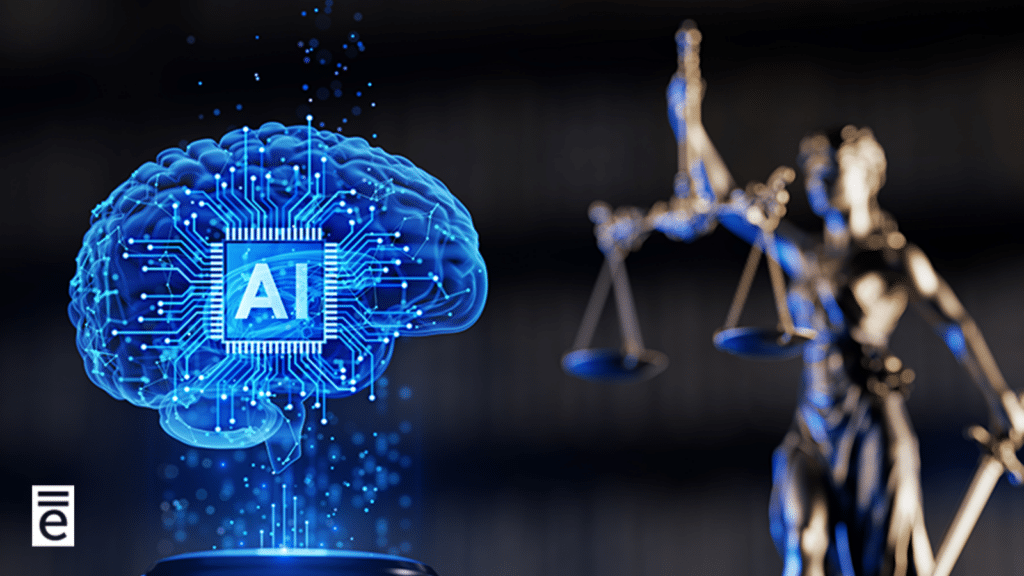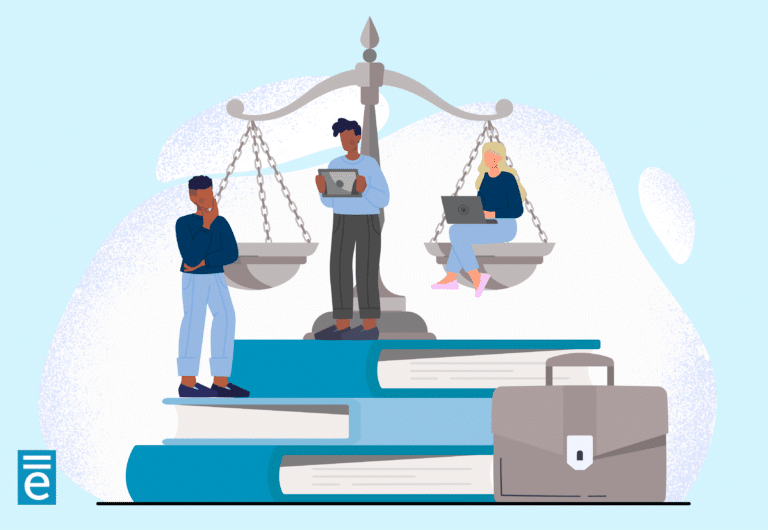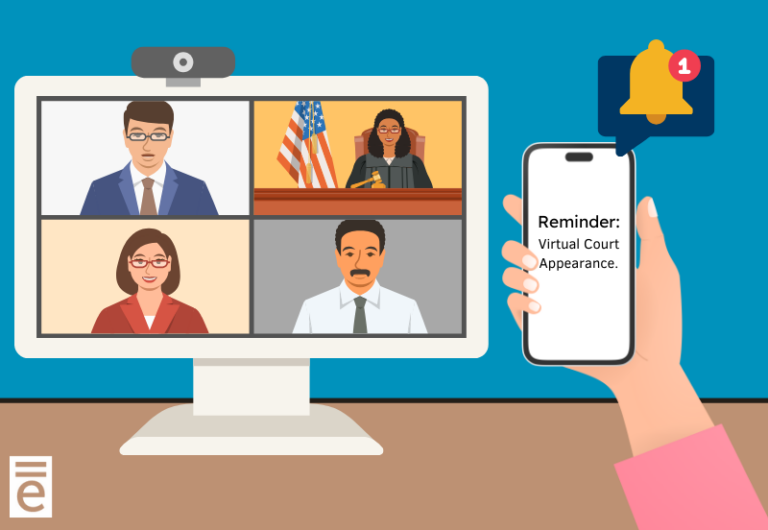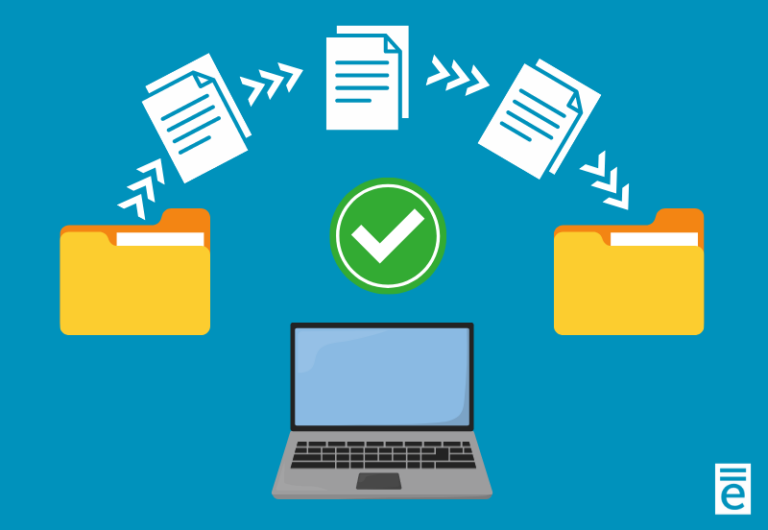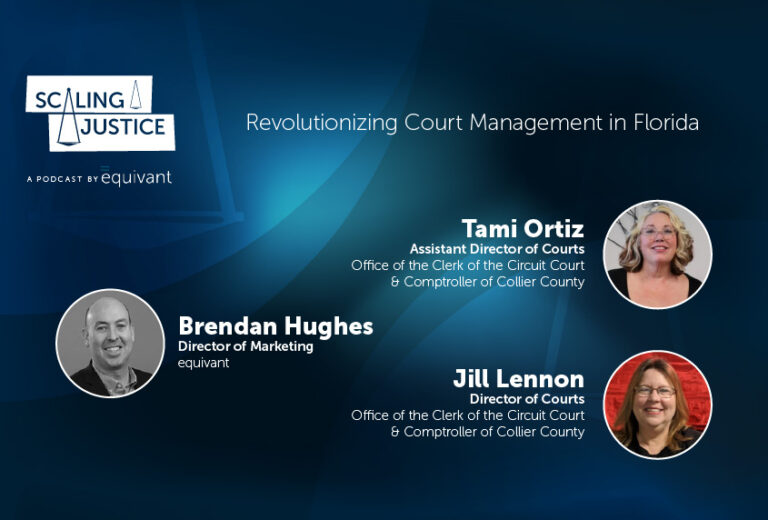While artificial intelligence (AI) has been around for a while, it made a big splash in 2023. There are many components of AI, and the implications for the legal industry are huge. As it continues to evolve, we expect to see more courts exploring what AI means for them specifically and determining the measurable gains of its use. In addition, we expect courts to explore some of the hot topics related to court privacy, cyber security, and deep fakes as they pertain to AI.
In this post, we explore how AI is already affecting the justice industry in both positive and negative ways and how we see that impact evolving over the next several years.
Understanding the Difference Between Automation and AI
As conversations about AI have ramped up, the definition of automation versus AI has become intertwined, even though they are two very different things. As we broaden our understanding, it’s important to differentiate between the two. Artificial Intelligence involves the changing of behaviors or responses based on what is learned. Automation involves something that has been programmed and does not change unless a human changes it.
Many courts are already using some type of automation because it’s helping them address staffing shortages, limited resources, and decreasing budgets. AI hasn’t been as widely adopted in courts as automation yet, but we see courts leverage it in positive ways like helping with docketing tasks and supporting the community with AI bots. The impact it’s having is promising for improving efficiency and services while also addressing some of the bigger challenges like court privacy and cyber security.
Maintaining Court Privacy in an Increasingly Public World
Courts are responsible for a lot of private data and personal information. Because of that, there are policies being developed that relate to court privacy and AI. However, AI is moving fast, and everyone is trying to get caught up while establishing policies that accurately reflect the impact AI is having. It’s a process and it’s going to take time.
As these policies are put into place, courts should engage in open communication now and work to understand the complexities that AI brings to the table. For example, there are many different tools that now have added AI components. But many people are not aware that often, if you have an AI feature turned on, it automatically grabs and stores data for reuse. Although this is not the case for everything that has an AI component, it’s important to be aware of because courts are responsible for ensuring personal information is safe and unable to be used without an individual’s consent.
Leveraging AI to Improve Cyber Security
While court privacy and protection of personal information is the subject of many developing policies, overall cyber security is another challenge facing our court system today. Recently, we’ve seen state courts get hacked and held for ransom. These attacks are a threat to private data and are creating a new stressor for court systems that are already short-staffed and under-resourced. Fortunately, this is a situation where AI could be used as a tool to help improve security. As AI advances, we think it’s likely that courts will be able to leverage it to learn how and why certain attacks are happening and send notifications of potential attacks.
How Courts are Preparing to Address Deepfakes
Technology has improved significantly over the last several years. Although the advancement of technology is beneficial, it also poses new challenges outside of privacy and security. Up until recently, identifying fake media was easier because of obvious flaws. For example, a fake image of a person might have included an extra finger on someone’s hand or an arm that didn’t quite match up to a body. Because of the advancements in technology and AI, that is no longer the case.
We are now dealing with something called deepfakes, or artificial media (images, video, audio, etc.) generated by AI. While this is a challenge that involves the whole world, it poses a unique set of challenges for courts when determining whether a piece of evidence is real or fake. Because this is so new, the justice industry doesn’t have all the answers yet. However, there are people, like a group from Oakland University in Michigan, that are actively working on preparing for and addressing these challenges so that courts are prepared to deal with them head on.
What are Predictive Analytics?
Even though the advancement of AI poses many new challenges, the opportunities, especially for the justice industry, are endless. Many courts are already taking advantage of some of these opportunities, like using predictive analytics to improve efficiency and provide better services to the community.
According to Harvard Business School Online, predictive analytics involve the use of historical data to forecast potential scenarios that can help drive strategic decisions. While this sounds great, there has been some concern that this type of technology will result in the loss of jobs, but that isn’t the case. Based on the trends we are seeing, predictive analytics will supplement the work that court personnel are already doing. Essentially, staff will be able to do more with less by leveraging predictive analytics to assist with tasks and support a more efficient case flow. AI isn’t perfect though, and humans are still needed to verify accuracy. For example, if AI is used to generate an order, someone will need to verify that any stated case precedents are accurate. There have already been situations where AI was used in a court, and something wasn’t accurate. Humans are and will continue to be needed even with AI’s expansive capabilities.
How AI Will Help Support Self-Represented Litigants
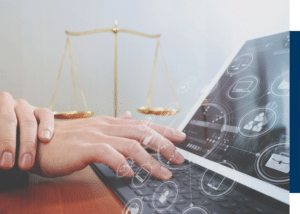
The AI component of predictive analytics can understand, learn, and apply its intelligence to a wide range of scenarios, including supporting self-represented litigants (SRLs). Perhaps someone is interested in learning how to file a protection order. Through the use of an interactive AI bot and predictive analytics, the individual will start getting asked questions like “Do you have children?” and “Do you live in the same house?” The AI bot knows what needs to be asked and will be able to predict additional questions based on the individual’s answer. Most SRLs don’t know what they need to do to file a protection order. AI can walk them through what they need to do and what information they need to provide to reach an outcome.
In addition to predictive analytics and AI bots, Online Dispute Resolution (ODR) now has an AI component and is helping SRLs settle small claims without ever having to go to court. Not all courts have adopted ODR yet, but we are seeing it become more popular because it’s freeing up the time of court personnel, resulting in faster case resolution, and supporting SRLs and community members.
What Does the Job Landscape Look Like with AI in the Picture?
Whether you work in the justice industry or not, the future job landscape now that AI has made such a big splash has been a hot topic. Based on what we’re seeing and conversations that are taking place at conferences and industry events, we can confidently say that jobs aren’t disappearing, but they are changing. Instead of first-year law students being hired to help generate draft orders, they are now auditing and working on documents generated by AI. Additionally, there are some positions that will likely disappear through attrition and then evolve into something new to meet the needs of the modern court.
Although there are challenges, AI is a tool that’s being used to improve overall efficiency. As the justice industry begins to harness all the capabilities of AI, courts will be able to focus less on the mundane, everyday tasks and put more energy into advancing justice and meeting the needs of community members in better, more efficient ways
